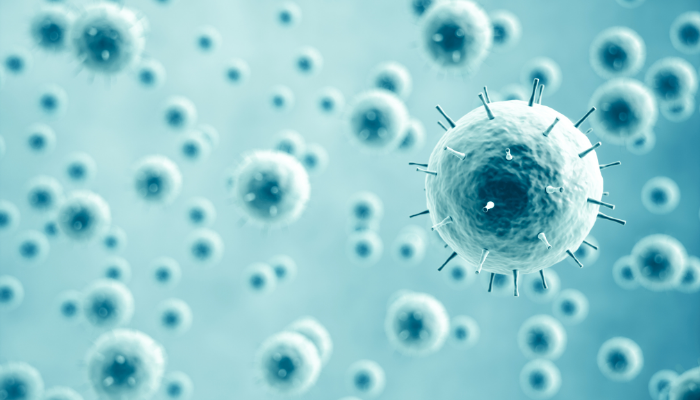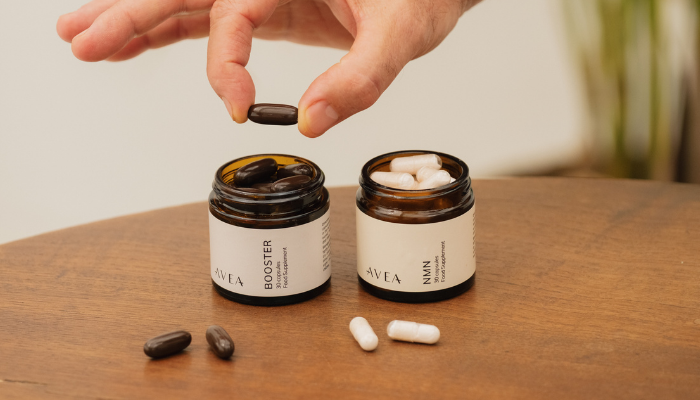Oxidative stress, a term that might sound complex, is a simple yet crucial concept in understanding your body’s balance between creation and neutralisation of free radicals.
These reactive molecules, while essential in small amounts for immune function and signalling, can wreak havoc when their numbers overwhelm your body’s antioxidants.
This imbalance is at the heart of oxidative stress, a state that has been linked to a myriad of health issues, from ageing and chronic diseases to inflammation and cellular damage.
In a world where environmental factors, lifestyle choices, and diet can tip this delicate balance, understanding oxidative stress is key to safeguarding your health and preventing disease.
Delve into the causes, effects, and mitigation strategies of oxidative stress. Gain insights into maintaining cellular health and promoting longevity.
In this article
Free guide to reverse your biological age

- Master the science of rejuvenation.
- Apply proven tips to turn back the clock.
- Transform your health with top longevity specialists.
What is oxidative stress?
Oxidative stress is a biological phenomenon rooted in the imbalance between free radicals and antioxidants in our bodies[1].
Free radicals are unstable molecules that can damage anything they touch.
You might be surprised to learn that these molecules are, in fact, natural by-products of energy production in our cells. Normally, they’re kept in check by antioxidants, substances that neutralise these radicals.
But, when the balance tips, and free radicals outnumber antioxidants, oxidative stress occurs.
This imbalance leads to oxidative damage, affecting proteins, lipids, and DNA within cells. It’s a fundamental mechanism behind ageing and various diseases, showing the profound impact of this cellular tug-of-war.
Understanding oxidative stress is not just about grappling with a complex scientific concept; it’s about unveiling a key player in our overall health and the ageing process.
Causes of oxidative stress
Oxidative stress emerges from a complex mix of both internal and external factors. While our own bodies’ processes can inadvertently contribute to this imbalance, external environmental and lifestyle factors also play a significant role.
Understanding the interaction between these internal and external sources is key to managing and mitigating oxidative stress.
Internal factors
- The primary internal source of free radicals is your mitochondria. As the energy-producing organelles in your cells, they generate free radicals mainly during the process of cellular respiration.
When mitochondria convert nutrients into energy (ATP), they consume oxygen, and a small percentage of this oxygen forms reactive oxygen species (ROS) as by-products.
This occurs because the electron transport chain in mitochondria, while highly efficient, is not perfect and occasionally leaks electrons that react with oxygen to form ROS. These free radicals are a natural result of the energy production process.
Dysfunction in mitochondria can lead to increased free radical generation.
- Metabolic processes in cells, besides energy production, such as immune responses, and detoxification, inherently generate free radicals as by-products. These are a natural outcome of biochemical reactions.
When these free radicals are produced in excess and not adequately neutralised by antioxidants, they contribute to oxidative stress, which can potentially lead to cellular damage.
External factors
- Environmental pollutants: Exposure to pollution, UV radiation, and industrial chemicals increases free radical production.
- Lifestyle choices: Smoking, alcohol consumption, and a poor diet (both nutrient deficiencies and excesses) contribute to oxidative stress.
- Medication and drugs: Certain pharmaceuticals and recreational drugs can enhance free radical production, leading to oxidative stress.
Oxidative stress and inflammation
The intricate link between oxidative stress, cellular damage, and inflammation is a critical aspect of many health conditions. Oxidative stress, by damaging vital cellular components, can trigger inflammatory responses.
This occurs because damaged cells release chemical signals that activate the immune system, leading to inflammation. Then again, inflammation itself can promote the production of free radicals, creating a vicious cycle that exacerbates both conditions.
This mutual interaction is particularly notable in chronic diseases, where persistent inflammation and oxidative stress feed into each other, perpetuating tissue damage and disease progression.
Understanding this connection is key to developing strategies to mitigate the impact of oxidative stress and inflammation on our health.
Detecting oxidative stress
Identifying oxidative stress involves specific markers and diagnostic methods. Common biomarkers include oxidised DNA, proteins, and lipids, which indicate cellular damage from free radicals.
Advanced diagnostic techniques often measure the balance between antioxidants and oxidative substances in your body. Blood tests can reveal levels of certain enzymes and molecules linked to oxidative stress, providing a snapshot of your oxidative status.
Symptoms of oxidative stress
- Fatigue
- Memory loss or brain fog
- Muscle or joint pain
- Wrinkles and grey hair
- Decreased eyesight
- Headaches and sensitivity to noise
When left unchecked, oxidative stress can lead to the development of acute and chronic diseases.
Oxidative stress and diseases
- Hypertension: influenced by oxidative stress through enzyme dysfunction, it leads to higher blood pressure, increasing the risk of vascular diseases. Prolonged oxidative stress can exacerbate this condition, making management challenging.
- Atherosclerosis: oxidative stress contributes to plaque formation in blood vessels, leading to heart problems. It triggers a cascade of events that accelerate atherogenesis, a key factor in cardiovascular diseases.
- Heart failure: oxidative stress plays a critical role in heart failure by reducing antioxidant levels. It exacerbates conditions like cardiac hypertrophy, contributing to the progression of heart failure.
- Stroke: increased oxidative stress can lead to ischaemic brain injuries, heightening the risk of stroke and cerebral damage. It exacerbates neuronal damage, increasing the severity of strokes.
- Cardiovascular disease: oxidative stress affects cholesterol levels, increasing the risk of plaque build-up and vascular diseases. Persistent oxidative stress can accelerate the progression of cardiovascular diseases.
- Cancer: oxidative stress contributes to cancer by causing oxidative DNA damage that stimulates cancer growth. It can initiate and promote the proliferation of cancerous cells.
- Neurological diseases: linked to conditions like Alzheimer’s, oxidative stress accelerates neuron loss and dementia progression. It contributes to the degeneration of neural pathways, worsening neurological conditions.
The role of antioxidants
Antioxidants are crucial in counteracting oxidative stress. They neutralise free radicals, preventing them from causing cellular damage.
The body naturally produces some antioxidants, like glutathione, superoxide dismutase, and catalase.
However, dietary antioxidants also play a vital role. Vitamins C and E, flavonoids, and polyphenols, commonly found in fruits and vegetables, are examples of such antioxidants.
They contribute to the body’s defence mechanism against oxidative stress. Understanding how antioxidants work and ensuring an adequate supply through diet or supplementation is essential for mitigating the damaging effects of oxidative stress.
Learn more about antioxidants.
Avea’s solution: The Cell Primer
The Cell Primer is a product designed to defend cells against oxidative stress, developed by a team of longevity experts.
It contains six well-researched antioxidants, including Quercetin, Fisetin, PQQ, Ergothioneine, Spermidine, and Selenium.

These components are chosen for their properties in promoting autophagy, clearing senescent cells, boosting brain health, and providing cellular protection against oxidative damage. The product is vegan and comes in a sustainable packaging, with a 90-day money-back guarantee.
Diet and oxidative stress
An imbalanced diet, high in processed foods, sugars, and unhealthy fats, can exacerbate oxidative stress and inflammation. Such diets often lack essential antioxidants, leading to an increase in free radicals.
Instead, a diet rich in antioxidants will help you in combating oxidative stress. Foods like berries, nuts, dark chocolate, green leafy vegetables, and spices are packed with these vital compounds.
A balanced diet that includes healthy fats and avoids processed foods helps in reducing oxidative stress and associated inflammation.
Lifestyle and oxidative stress
A sedentary lifestyle, coupled with stress, can aggravate oxidative stress and inflammation. Lack of physical activity diminishes your body’s antioxidant defence system and can lead to mitochondrial dysfunction.
On the other hand, regular exercise enhances antioxidant defences and improves mitochondrial health. Managing stress through meditation, mindfulness, and other techniques can also lower oxidative stress levels.
Adequate sleep, hydration, and avoiding harmful habits like smoking and excessive alcohol consumption are equally important in mitigating oxidative stress.
Oxidative stress scientific study PDF.
Are oxidative stress and general stress the same?
Oxidative stress, a biochemical imbalance with excess reactive oxygen species (ROS) leading to cellular damage, differs from general stress, which is a psychological and physical response to challenges.
However, they are highly interconnected: general stress can increase oxidative stress by elevating ROS production and lowering antioxidants. In turn, oxidative stress can affect overall health and contribute to psychological stress.
This highlights the complex relationship between mental and physical health, with each potentially exacerbating the other.
5 simple daily habits to reduce oxidative stress
If you’re working from home or simply juggling between office and family life, here are some simple ways to reduce oxidative stress:
- Smart eating: Keep antioxidant-rich snacks like nuts or fruit at your desk. Quick, healthy choices to combat oxidative stress even during busy days.
- Micro-exercise: Take short, active breaks. A quick stretch or a brief walk can boost your body’s defences against oxidative stress.
- Quality sleep: Prioritise good sleep. Even with a busy schedule, ensuring restful nights is key for cellular health.
- Brief mindfulness: Practice short mindfulness or breathing exercises, even for a few minutes, to manage stress effectively.
- Mindful choices: At work or home, try to avoid excessive caffeine or processed snacks. Opt for water and healthier alternatives to keep oxidative stress at bay.
- Bonus tip: Don’t forget your Cell Primer, preferably in the morning.
Key Takeaway
Managing oxidative stress is vital for maintaining good health and preventing various diseases. You should work in balancing your free radical and antioxidant levels through diet, exercise, and lifestyle choices.
Small daily habits can make a big difference in reducing oxidative stress. Us at Avea, encourage you to be proactive in your health management. Remember, taking care of your body’s oxidative balance is a step towards long-term well-being and health.
References











